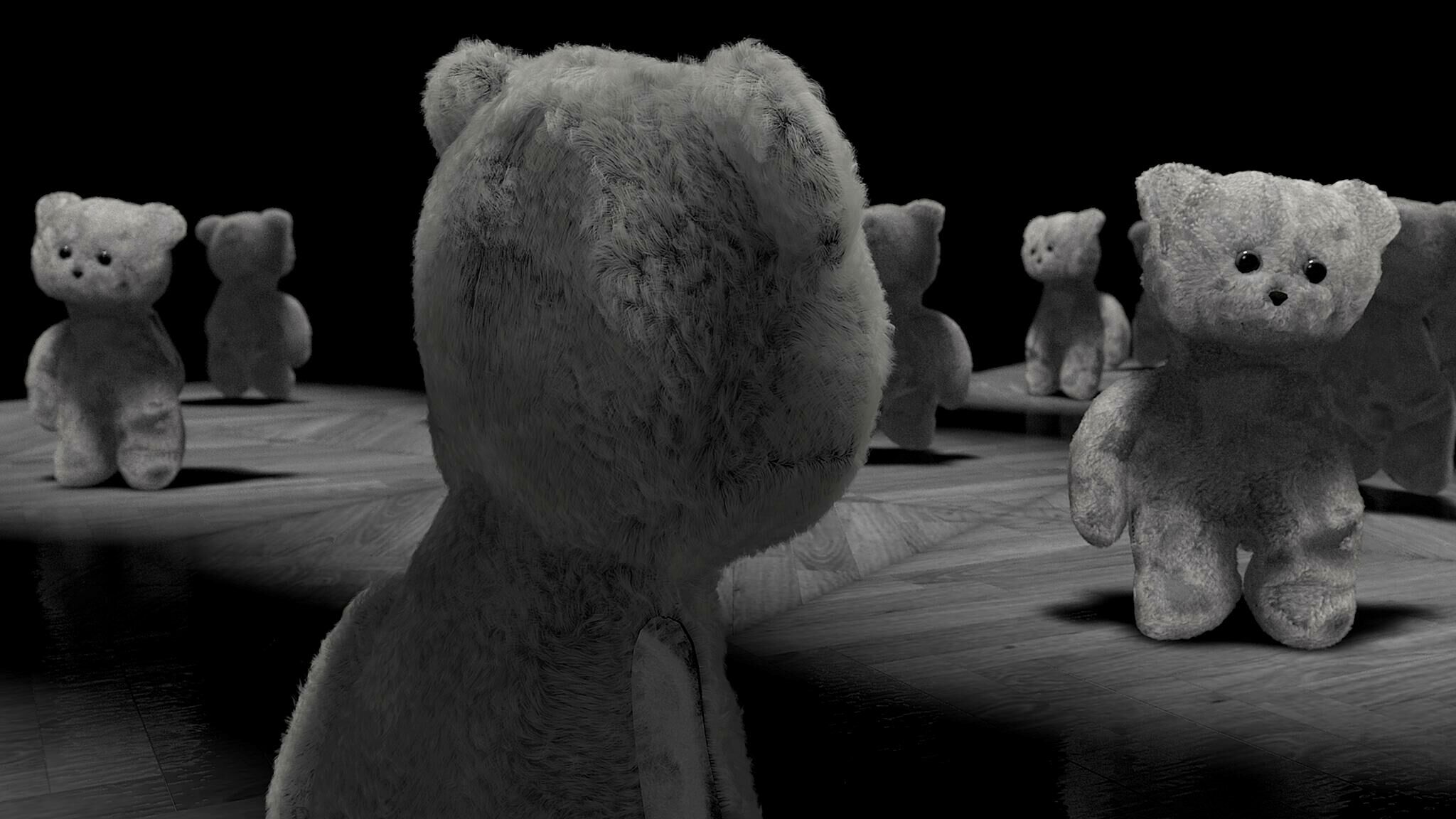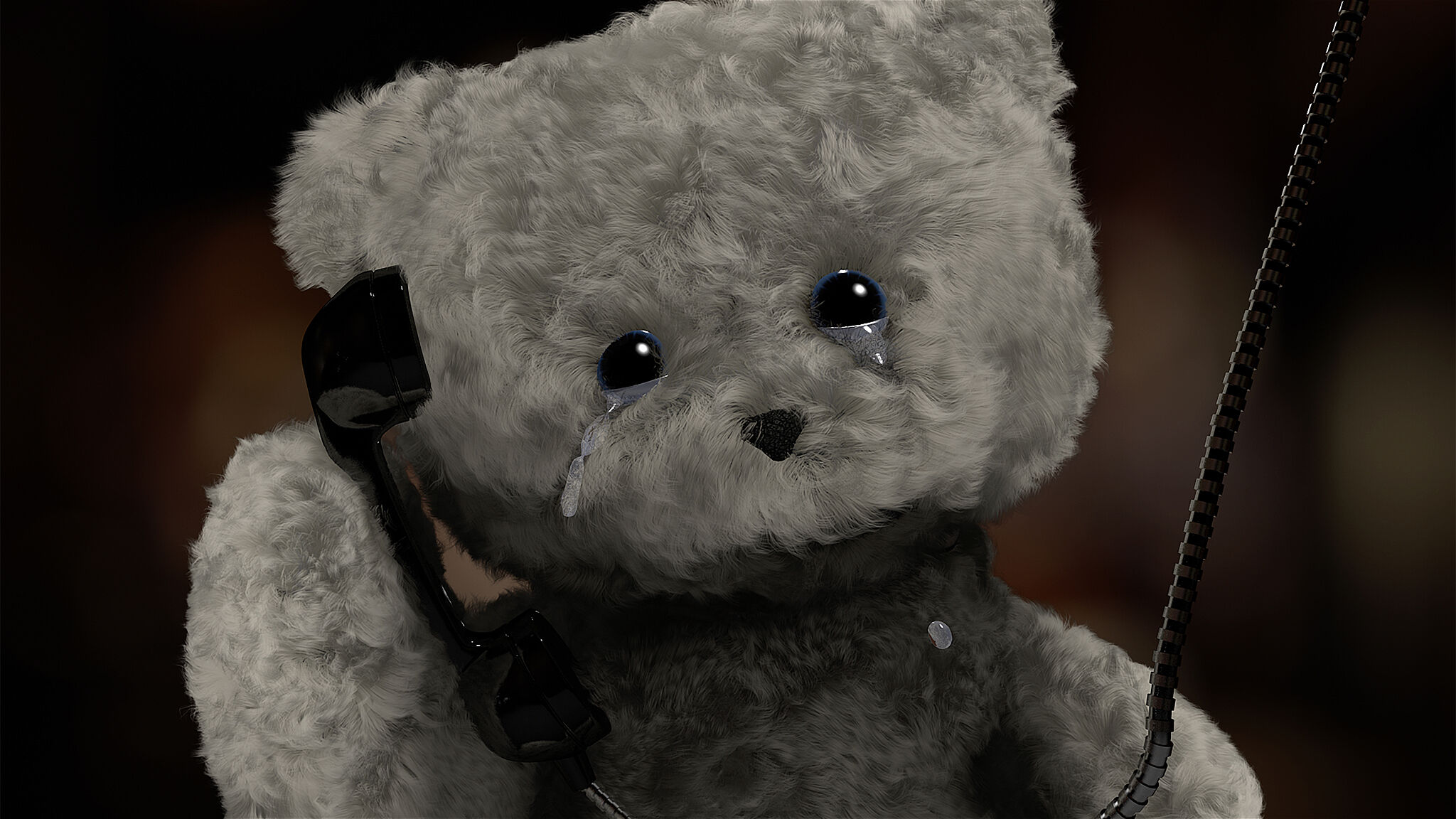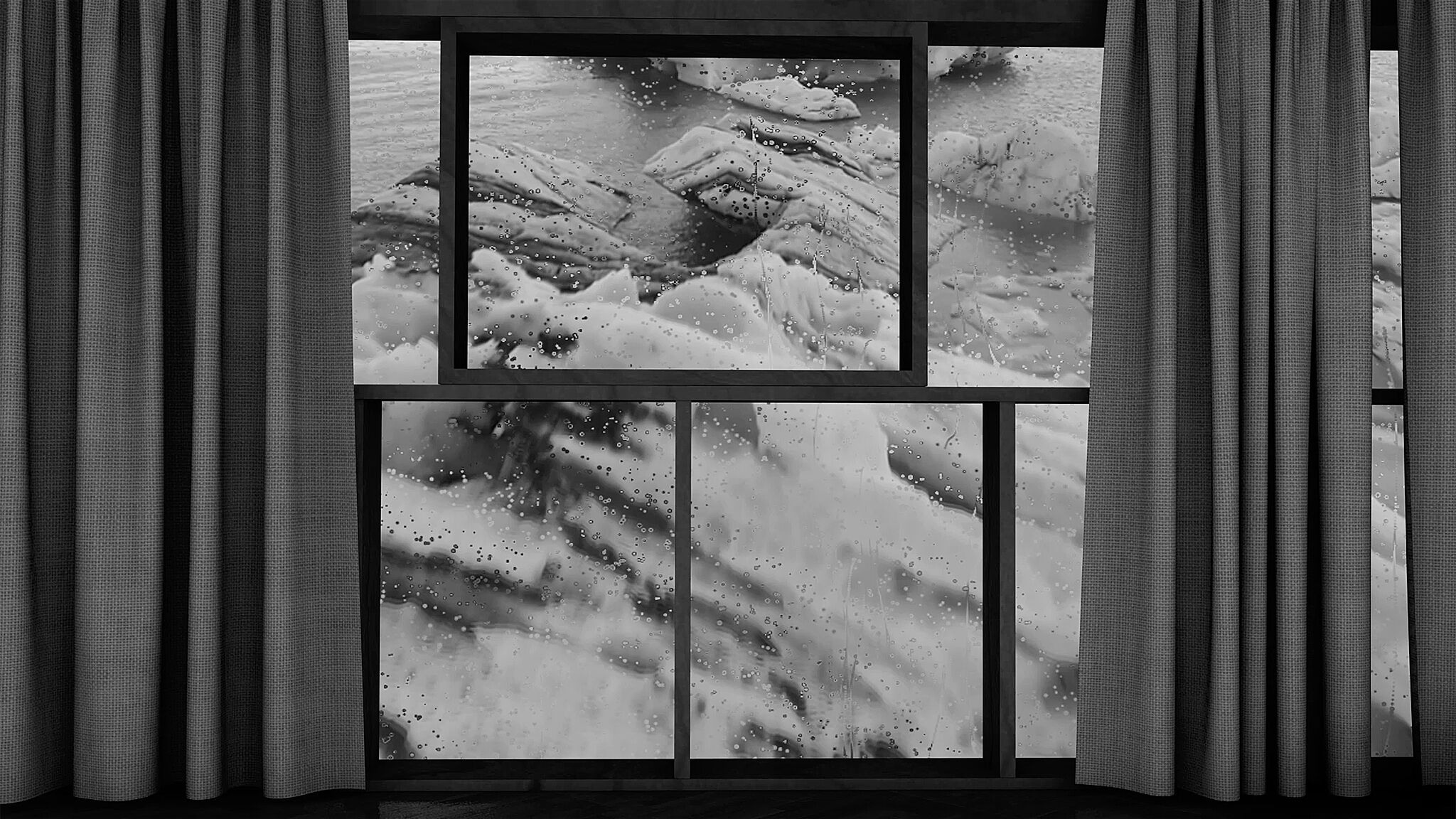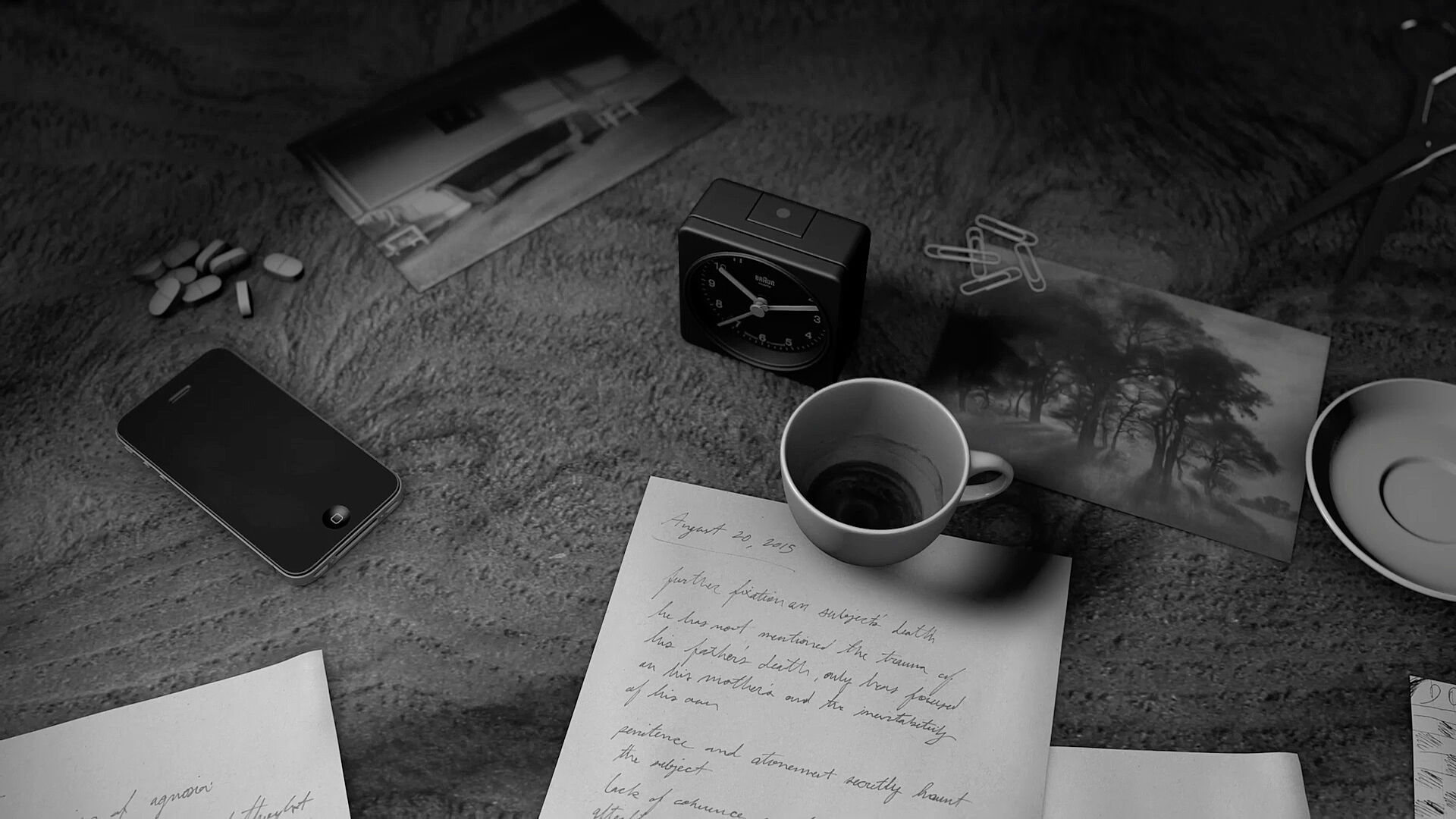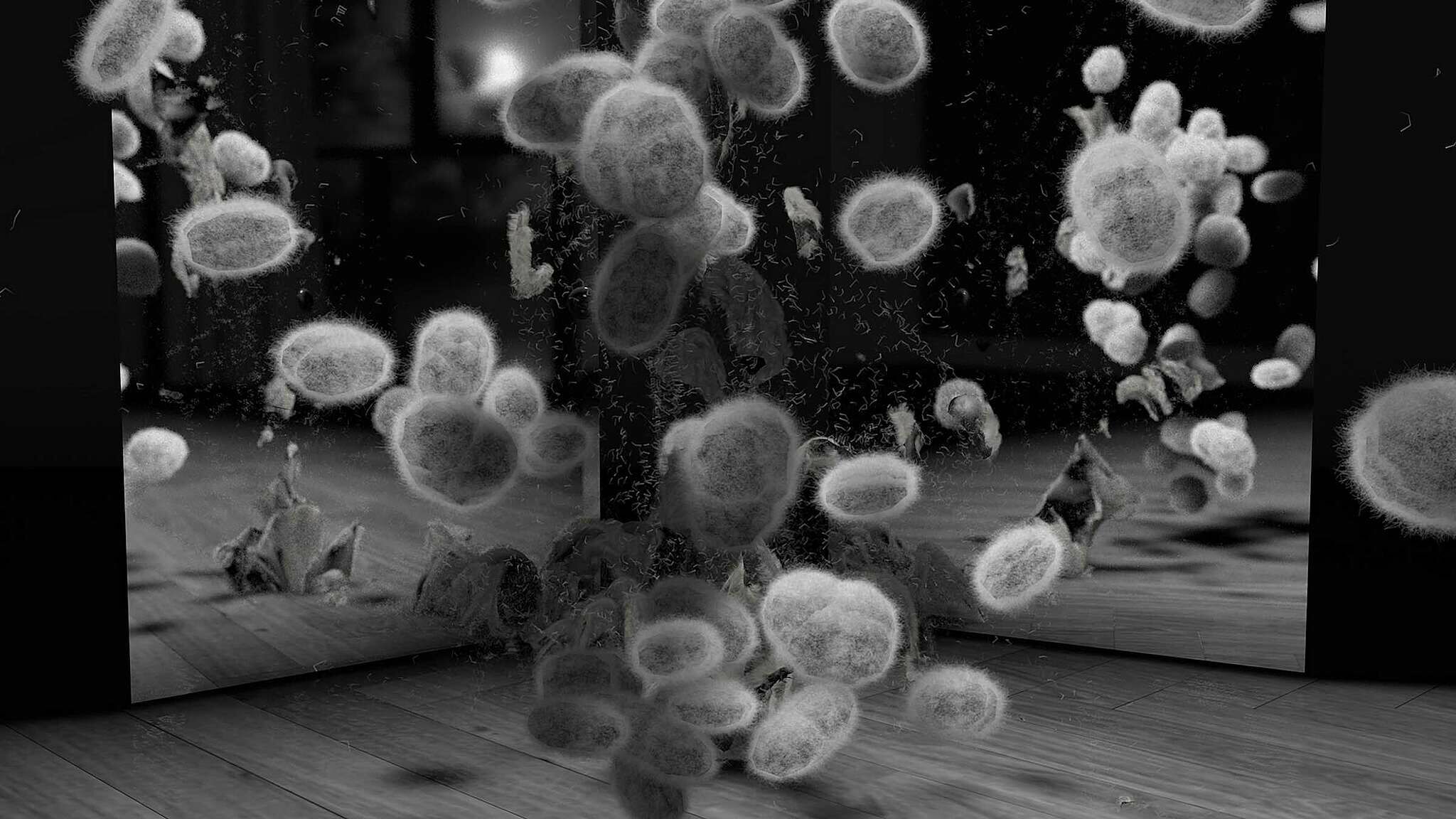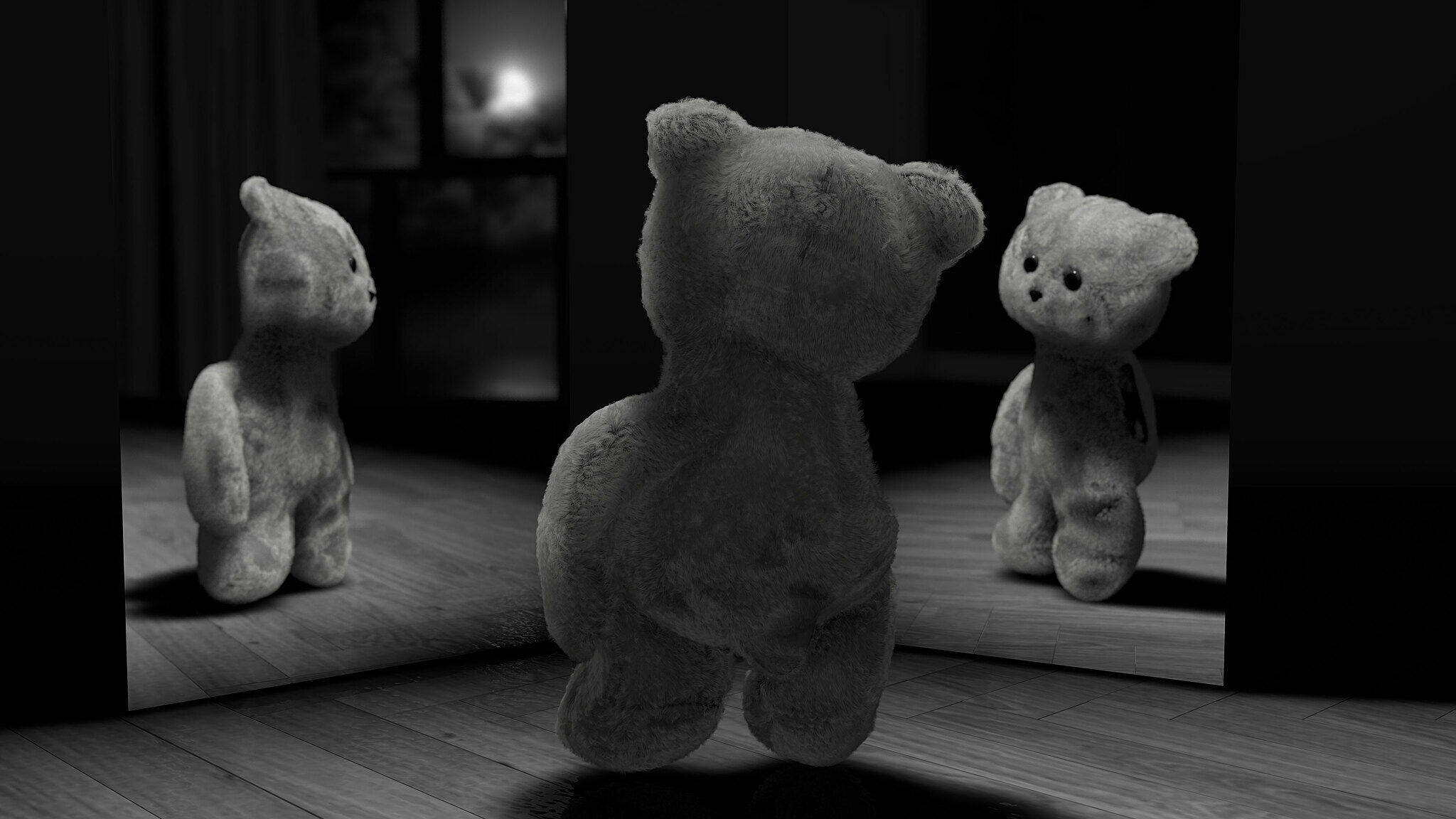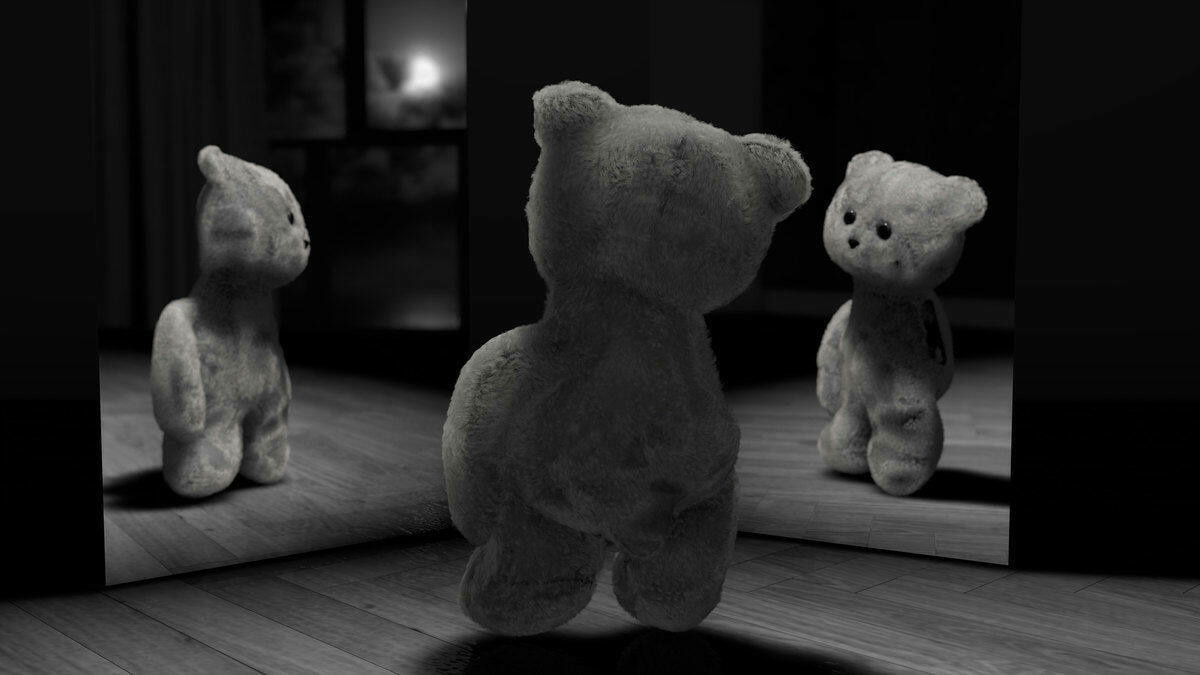Juan Antonio Olivares:
There Is No End
For Juan Antonio Olivares, Moléculas (2017) is a work fundamentally about empathy. It raises questions about separation, loss, and the pain that ensues—and how this process situates us in a universal cycle of life and death. The narrative of this ten-minute video is, arguably, nothing new. It is the stuff of great literature and film but also of our lived experience: born to parents and families we come to know and love, we inevitably face unavoidable loss and death. As Olivares (b. 1988) has explained about the anguish apparent in the work (and the effect it has on the viewer), “That’s part of our humanity, that’s part of our experience on this earth, to encounter the sadness that results from losing people in our lives.”Juan Antonio Olivares, interview with the author, February 13, 2018.
But Olivares’s arrival at this story line is unique, and thus what results is distinctly meaningful. The particular audio track that forms the structural heart of the work and provides its narrative arc is Olivares’s father speaking in Spanish.While the narration is in Spanish, the work is subtitled in English and elements in the video—notes on the therapist’s desk, for example—also appear in English. Olivares subtly reminds us of his personal navigation of both the Spanish- and English-speaking world: he was born in Puerto Rico to South American parents but raised in part in the continental United States, where he now lives and works.Captured unexpectedly when his father came to visit him in Düsseldorf, Germany, where he spent two years at the Kunstakademie, Olivares spontaneously recorded the conversation, which unfolded over several hours. It marked an important moment in their relationship, one that Olivares went on to memorialize—somewhat abstractly—through his video and by carefully editing the audio file. For the artist, this discussion became a vehicle through which to explore larger existential issues, rather than simply a father relaying a remembered experience to his child. With it, Olivares aims “to convey the universality of immigration or displacement”Juan Antonio Olivares, email to the author, January 17, 2018.and to create something more broadly relatable. Through the making of the work, Olivares recalls striving to “really open up the material, and make it something beyond the conversation that I had with my father.”Olivares, interview with the author.Ultimately, Moléculas establishes a sense of comfort or a predictable truth; while the story begins as something personal and self-referential, it is transformed into a far-reaching and deliberately abstract message. As Olivares explained in a recent interview, “I'm using myself to understand a more abstract sense of self.”Stephanie Seidel, “Self-Abstractions: Juan Antonio Olivares’s 3D Animation Moléculas, 2017,” Flash Art, April 2018, 17.Accordingly, the work never clearly reveals whose voice we are hearing or even what family the narration references—deliberate omissions by Olivares. Yet somehow the work’s stinging impact is not diluted.
Moléculas is narrated by a stuffed teddy bear that is missing an arm. The seemingly banal object, which one might expect to be humorous or playful, instead painstakingly relays his father’s difficult story while spinning around a modernist space that suggests, through various indicators, a therapist’s office. The bear is at once a stand-in for the narrator, the person impacted by the story, but also for all of us, a notion that is underscored by its very ordinariness; Olivares describes the bear as “an almost universal symbol of empathy.”Olivares, interview with the author.But beyond this, his deliberate detail—at certain moments we are able to peer into the hole left by the missing arm and see the bear’s white stuffing—seems to signal our shared vulnerability and the reality of the pain we will all inevitably carry through our lives. This we know, Olivares goes on to suggest, as surely as we know our lives will end, and that the cycle will begin again.
For Olivares, “having a teddy bear deliver this story is a way of encouraging viewers to project themselves into this scenario.”Olivares, email to the author.Its appealing and seemingly familiar appearance lures us into the story and accompanies us as the narrative unfolds. We are startled by the ways in which a mere stuffed bear can bring us to such a difficult place, and so quickly. Within moments of the video’s beginning, Olivares makes his bear relatable and sympathetic, often presenting it wide-eyed and in the center of the frame, allowing the synched voice we hear to have even greater impact. In a matter of minutes, we are stunned by our own grief, unexpectedly provoked through this seemingly unassuming and ordinary object.
At the Whitney, Olivares has taken great care to underscore certain aspects of the video through his use of the actual space of its presentation.Moléculas has been presented previously in Düsseldorf and at the gallery Off Vendome in New York, both instances without the installation details or drawings that are part of the Whitney’s exhibition.The gallery in which Moléculas is projected has been bathed in gray, with gray walls, gray carpet, and a gray curtain that subtly echoes the interior depicted in the work. For Olivares, the carefully crafted (and highly intentional) space seen in much of the video suggests a classic, modernist room (complete with Le Corbusier chaise lounge). It seems almost timeless, with only selected details suggesting the present.Olivares describes this modernist space as being about a desire to create “a place of peaceful recollection” (interview with the author).(The deliberate inclusion of an iPhone on the desk, for example, provides one of the only connections to the current moment.) By carrying these domestic elements, however subtly, into the gallery, Olivares reinforces the immersive quality of Moléculas, but also, I think, heightens our ability to be subsumed by the voice relaying this story. His use of non-narrative audio—the constant sound of rain that permeates the piece and the crescendo of music at the end, for example—also compels us viscerally into the piece. Upon entering the gallery, this combined physical and virtual space, we are unavoidably lost in this invented yet familiar world.
Also unique to the installation at the Whitney is a suite of graphite drawings by Olivares that are closely related to Moléculas. Each drawing (notably quite small, most only eight by ten inches) intimately depicts a specific frame or aspect of the video, individually made at a different point in his process: either before, during, or after completing the video. These are not straightforward preparatory studies (nor are they typical storyboards often done in conjunction with a film) but are instead works he created to better understand, or re-understand, the video itself—and to visually extrapolate certain key moments or ideas. Made using the animation software Cinema 4D (which Olivares taught himself to use while living and studying in Düsseldorf), the piece evolved over two years as a series of imagined and invented images he meticulously composed digitally. Accordingly, the drawings underscore the sense that the work comprises a series of carefully constructed compositions, delicately rendered digitally yet with the same tactile realism of the drawings in graphite. Much of Moléculas is black-and-white, with only certain moments appearing in color as the video progresses. (Olivares sparingly uses color in the video, employing it gradually and in particular moments at the beginning but then more boldly toward the end of the piece, as the narrative becomes more about our existential experience and our place in the universe.) Through the drawings, Olivares suggests an interplay between the seemingly disparate two-dimensional handmade works and the three-dimensional animation made through a digital, and ultimately more detached, process.
In many respects Moléculas is part of a larger conversation around what video and animation can do vis-à-vis the conflation of the real and the imagined, and to what extent personal or political truths can serve as important narrative catalysts.I am also thinking here about Maggie Lee’s Mommy (2012–15), a video in the Whitney’s collection about the death of the artist’s mother that unfolds through a nonlinear, almost dreamlike structure composed of multiple, seemingly disparate parts but unified through the narrative of her mother’s story.In a 2017 review of an earlier presentation of Moléculas, the writer compares Olivares’s fantastical invention fused with a certain realism to the work of artist Mika Rottenberg (b. 1976).Clayton Press, “A Review of Juan Antonio Olivares: Moléculas at Off Vendome, New York,” Arteviste, February 26, 2017.Similarly interested in drawing from reality to create works that simultaneously carry a social critique or narrative, Rottenberg’s videos (she also makes sculpture and installation work) are almost absurdist, using humor to further complicate the work’s relationship with the real. Like Olivares, Rottenberg feels no compulsion to dwell squarely in the realm of the straightforward; the work meanders and is inflected throughout with imagined elements, deliberately conjoining found ideas and material with the surreal. (Just as Olivares opts for his surreal storyteller, the bear, to relay the real-life narration, or allows the video to visually dive into a photograph resting on the desk.) However, the work of Mathias Poledna (b. 1965), an artist that Olivares himself identifies as an influence, may provide a more apt comparison, perhaps not in concept or conceit but as a result of the overall sensibility. Like Poledna, Olivares seems similarly interested in the intricate making of his animated work, and the possibilities it presents. In Poledna’s Imitation of Life (2013), recently shown at the Whitney,Poledna’s Imitation of Life was shown as part of Dreamlands: Immersive Cinema and Art, 1905–2016 at the Whitney in 2016 and is also part of the Museum’s collection.he painstakingly re-created a Disney-style animation using the original, handmade techniques.Notably both Olivares and Poledna share an interest in maintaining a significant relationship between their video animation and more handmade processes or techniques. For Olivares, this surfaces though his creation of the accompanying graphite drawings which emerged concurrently with the overall process of completing the video.While the work implicitly takes on a more exclusively conceptual note than Moléculas, Poledna’s exacting re-creation through video—which is in part about the capacity of what animation can do—feels very much related. As Olivares has explained about his work, and his interest in animation particularly, “I like that everything in a digital space or an animation space is intentional, so having this messy desk . . . is actually a byproduct of so many decisions.”Olivares, interview with the author.Both artists share a keen interest in foregrounding their ability to compose and construct visually, and through animation specifically.Olivares has also discussed an interest in artists ranging from Giorgio Morandi (1890–1964) to Thomas Demand (b. 1964) vis-à-vis their hyper-attention to composing images through the meticulous placement of objects and various details.
The searing quality of Moléculas results from Olivares’s deftness with both the technical and the conceptual. The work’s intense emotional charge—which surfaces within the ten-minute piece acutely and almost miraculously—is achieved in part through Olivares’s crisp and photorealistic imagery, what he describes as the mimesis of his internal thoughts.Olivares, interview with the author.Accordingly, this places the experience of the narration in the space of the real—and of one’s own life. The sharp, seemingly banal interior (ostensibly a therapist’s office) beckons us: this could be me and will be me. We will all make this inevitable journey in our lives, bumping along until we meet with sadness and, ultimately, our own end. But Olivares reminds us that we cycle back as molecules (or moléculas) into the earth, allowing the process to begin yet again on an endless yet predictable loop. The video concludes with the statement, “There is no end, it’s here.” For Olivares, there is a comfort in accepting the inevitability of the pain we will encounter. Empathy comes through what he conjures along the way, visually, narratively, and with his deliberate use of music and sound in this highly particular work.

